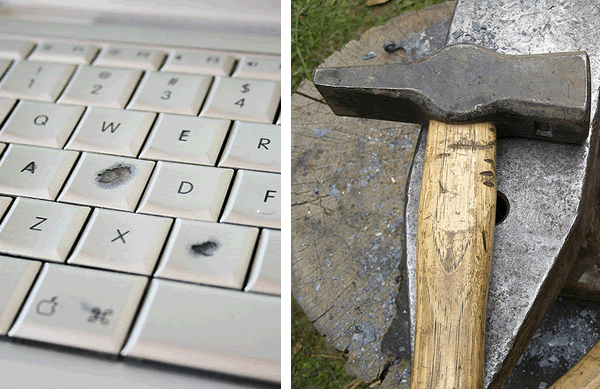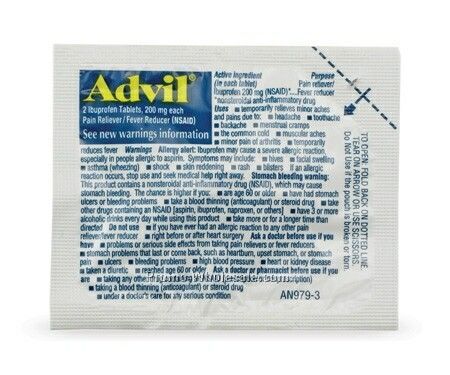Designing failure
February 9, 2011:
I've been noticing how Apple's Macbooks wear out in such a way that they feel old and broken, that they announce they are ready to be replaced rather than repaired (or simply enjoyed like an old hammer or a copper bartop that's developed an inviting patina with use).

Photos: flickr.com/gubatron (Macbook), flickr.com/erix (hammer)
At Apple, this quality extends to the visual design, which uncannily becomes dated the very instant the next version is unveiled. I don't know how they manage to do this over and over again, to appear timeless and classic at one moment and laughably dated the next. Planned obsolescence seems to be part of the design strategy at Apple.
But I'm more interested in the physical component of this than the visual, the way the materials chosen or assembled ensure premature failure rather than longevity. And I can't help wondering if it's intentional, if someone has made a deliberate decision to use materials that will wear out rather than wearing in.
I've been trying to think of what to call this. It's related to planned obsolescence, but that seems to refer more the capabilities of the thing or, as I've used it above, to its appearance, not to its integrity as a thing. No, this is at once more subtle a strategy and more stark. Something like designed failure.
Of course, like most tools of design, designed failure can be used for good as well as for bad. A simple, but clever, example, is the way a tiny slit in an otherwise all but unopenable package, when folded over becomes the start of a tear. I love designs like this where simple physics are used to such effect and few instructions are necessary because we are all vernacular physicists.

And I was just alerted to another example of designed failure by the twitterverse: the K1 Auto-disable syringe which, to prevent infections from shared syringes, can only be used once. According to the marketing copy:
A small ring etched on the inside of the barrel allows the specially-adapted plunger to move in one direction and not the other. After one complete injection is given the plunger will automatically lock in place, and break if forced, rendering the syringe useless.
So, two questions to ponder: If you are making something that should last, are you designing for resilience and repair? And, if not, can you design failure that supports the needs of your users?